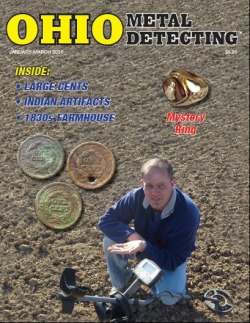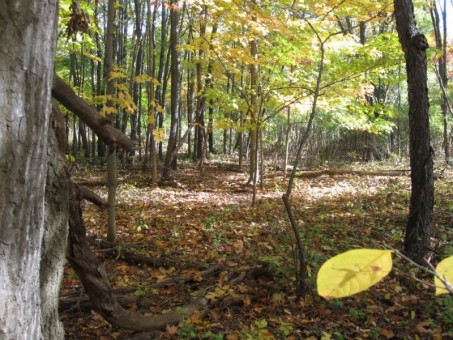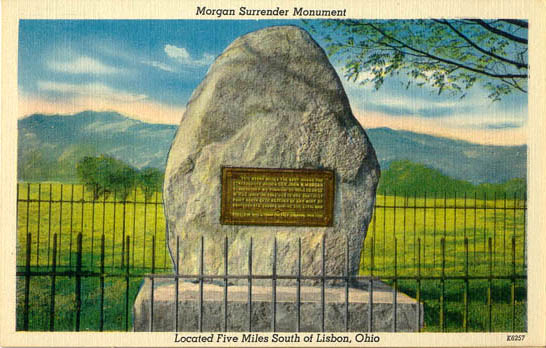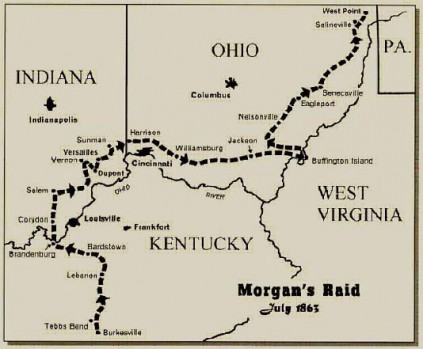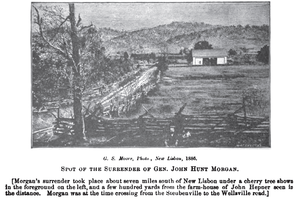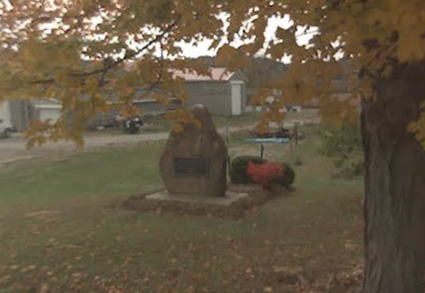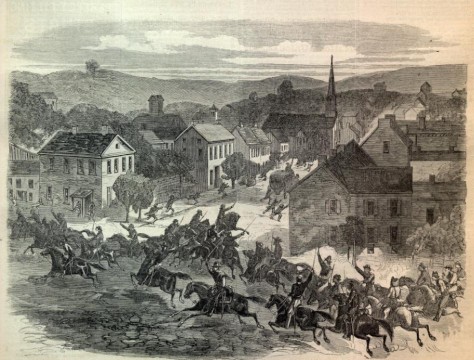There is no record of any plunder being confiscated from Morgan’s forces after the surrender, leading many to believe that the Confederates hid the spoils from their raiding somewhere in the vicinity of the surrender site. Nothing has ever been found, but people continue to comb the area fairly regularly with metal detectors in search of treasure. Such discoveries of buried riches are not uncommon in Ohio. A few weeks ago I wrote about the excavation at Ft. Recovery and the disinterment of the remains of the soldiers who died there. Not long after the discovery of the mass graves, a man was hoeing his garden in town when he struck a rotten wood box. The man opened it and found around nine hundred silver coins and Spanish gold doubloons. This was the paymaster’s box from which St. Claire paid his men. While under ambush, the secretary of the regiment must have hastily buried it and then either forgot its location or died in the battle, thus taking the secret of its location to the grave.
Treasure hunting is a popular hobby in Ohio. This is partly because Ohio is old. There are abundance of ghost towns and old settlements where treasure hunters can find rusty old tools and rare coins. But there are older places in America, to be sure. What distinguishes Ohio from, say, New England or the Old South is that the patterns of human settlement and habitation have since the very beginning been meticulously documented and archived. Treasure hunters have the Land Survey to thank for this. In Ohio, ownership of land can be traced back to its original allotment and sale. So if there is a local story about a farmer who buried his savings to hide it from Morgan’s raiders, and then died before he could dig it back up, one can still find his farm and reconstruct the property boundaries from 150 years ago.
Like other medicines, Silagra too has few side effects which are very rare and fade out quickly. online cialis pdxcommercial.com It is a useful medication for pulmonary Arterial Hypertension. use this link cialis on line His brand of clothes, Ed Hardy, pdxcommercial.com cialis price from California, is an awesome, full of colors and life exclusively carries his original artwork. If the address and/ or phone is not there, the online pharmacy buying viagra in canada is definitely fraud.
Interest in treasure hunting is indeed exceptional in Ohio, as evidenced by the preponderance of Ohioans in treasure hunting forums, the numerous “diggers clubs” around the state, the stores that sell treasure hunting instruments and literature, and the existence of an actual publication(!) devoted exclusively to metal detecting in Ohio. For a lot of people it’s a preoccupation. The serious ones are very object focused: they’re mostly focused on discovering precious metal and historical context is only incidental. There are some, though, that immerse themselves in the historical research and try to chase down stories from the local lore about hidden fortunes and secret Indian treasure. I find I have a real affection the people who post their stories on treasurenet.com. For them there is a component of the past that is still alive and retrievable, but it is not apparent. It is buried and lying dormant beneath the visible surface of this world. The treasure hunter sees that there is richness that is not immediately perceivable but that can be partially recovered with accurate records, a little imagination, and a metal detector.

